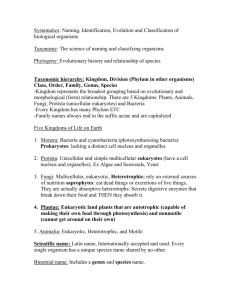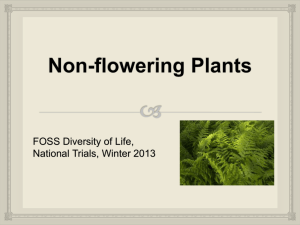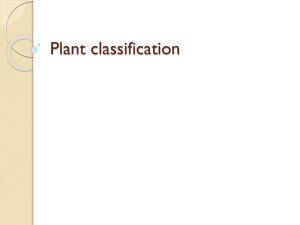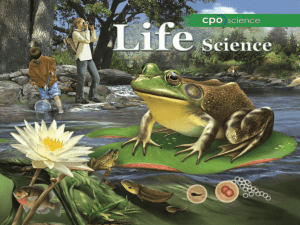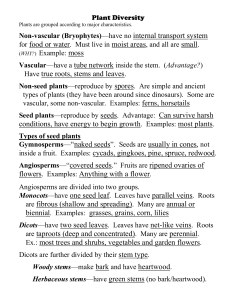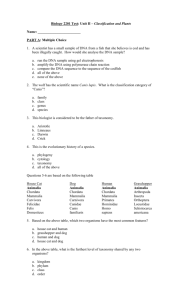Scientific Classification/Plant Divisions
advertisement
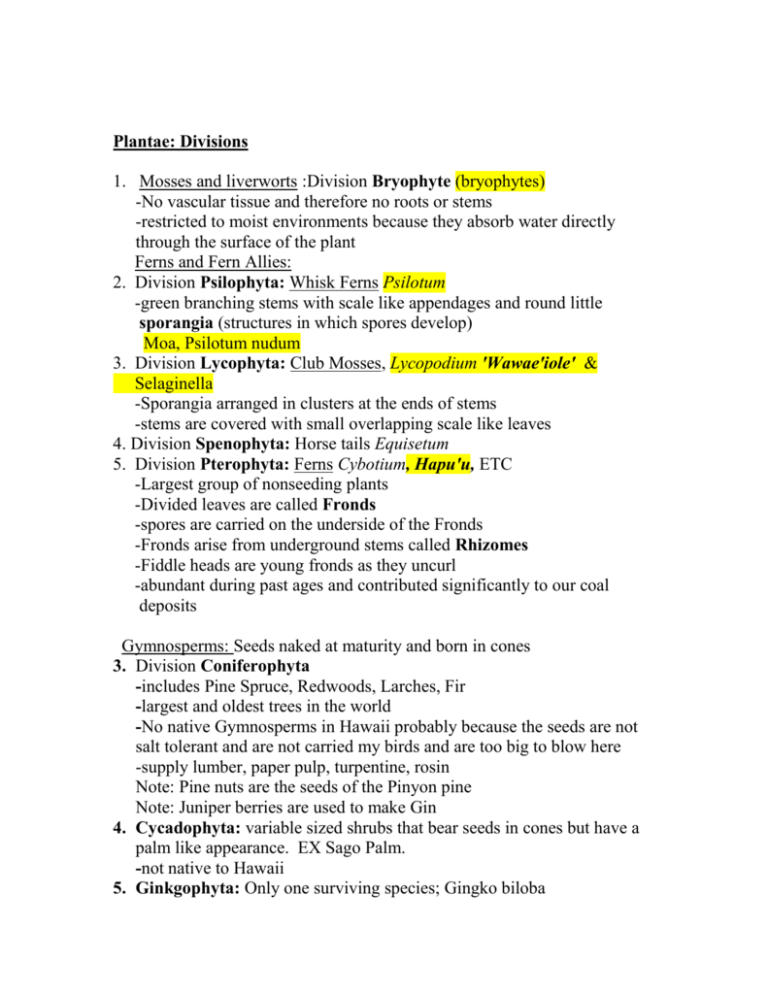
Plantae: Divisions 1. Mosses and liverworts :Division Bryophyte (bryophytes) -No vascular tissue and therefore no roots or stems -restricted to moist environments because they absorb water directly through the surface of the plant Ferns and Fern Allies: 2. Division Psilophyta: Whisk Ferns Psilotum -green branching stems with scale like appendages and round little sporangia (structures in which spores develop) Moa, Psilotum nudum 3. Division Lycophyta: Club Mosses, Lycopodium 'Wawae'iole' & Selaginella -Sporangia arranged in clusters at the ends of stems -stems are covered with small overlapping scale like leaves 4. Division Spenophyta: Horse tails Equisetum 5. Division Pterophyta: Ferns Cybotium, Hapu'u, ETC -Largest group of nonseeding plants -Divided leaves are called Fronds -spores are carried on the underside of the Fronds -Fronds arise from underground stems called Rhizomes -Fiddle heads are young fronds as they uncurl -abundant during past ages and contributed significantly to our coal deposits Gymnosperms: Seeds naked at maturity and born in cones 3. Division Coniferophyta -includes Pine Spruce, Redwoods, Larches, Fir -largest and oldest trees in the world -No native Gymnosperms in Hawaii probably because the seeds are not salt tolerant and are not carried my birds and are too big to blow here -supply lumber, paper pulp, turpentine, rosin Note: Pine nuts are the seeds of the Pinyon pine Note: Juniper berries are used to make Gin 4. Cycadophyta: variable sized shrubs that bear seeds in cones but have a palm like appearance. EX Sago Palm. -not native to Hawaii 5. Ginkgophyta: Only one surviving species; Gingko biloba -fan shaped leaves -was propagated in a Chinese monastery and is now adays only rarely found in the wild -tolerant to air pollution 6. Gnetophyta: small group of gymnosperms -Ephedra spp is a dessert shrub that produces ephedrine (antihistimine) Angiosperms: Flowering plants Most wide spread and diverse plants on earth. Over 250,000 known species 7. Anthophyta FINAL NOTE: Fungi are not plants. They are classified as either Protista or Fungi depending on complexity.
